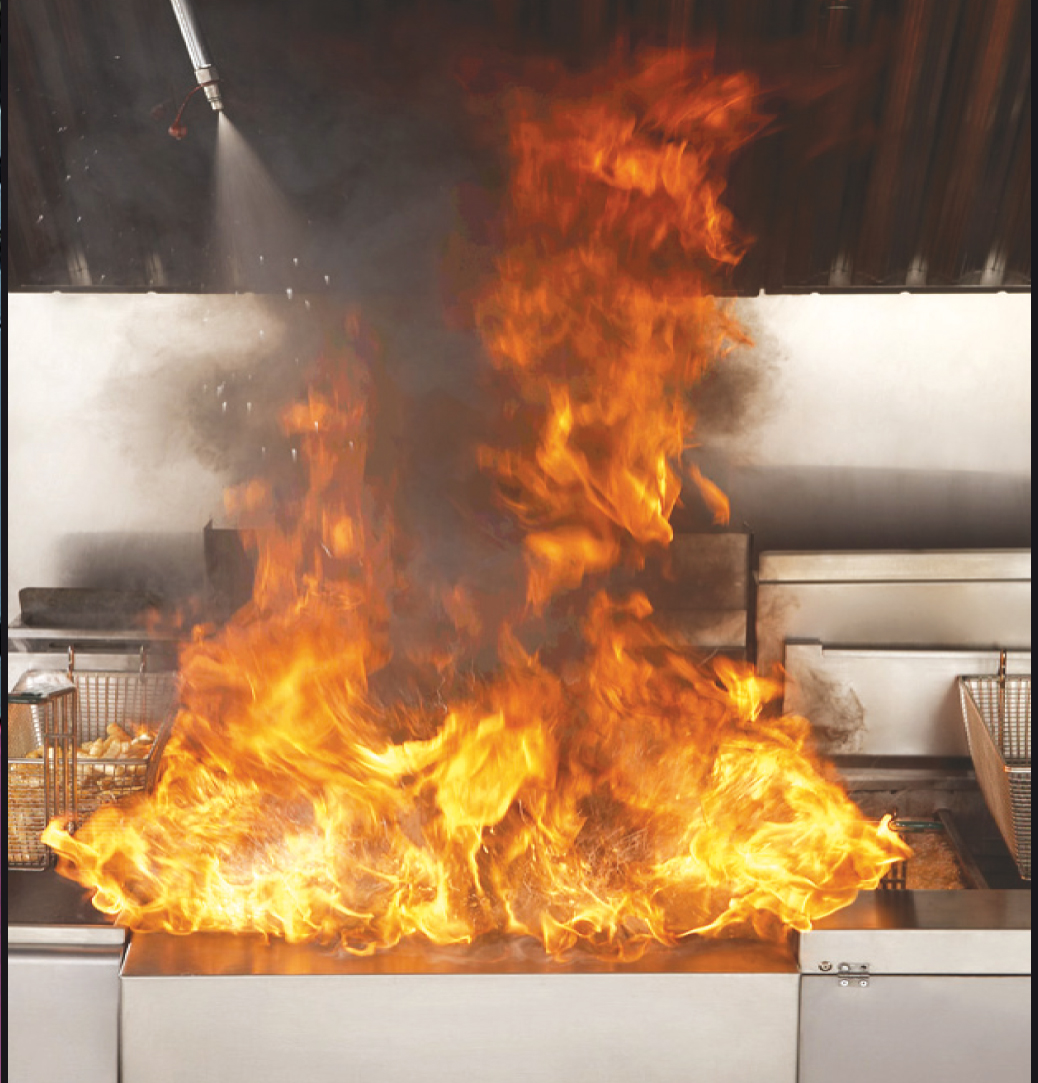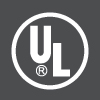Kitchen Fire Suppression Systems
Wet chemical extinguishing systems has been approved for use in protection of commercial cooking operation since the late 1960s. The first edition of NFPA17A, Standard for Wet Chemical Extinguishing Systems was introduced in 1986 by the National Fire Protection Association (NFPA). Wet chemical fire extinguishing agents consists of either organic or non-organic salts mixed with water to form a dischargeable alkaline solution under expellant gas pressure. Due to their liquid nature, wet chemical fire extinguishing agents do not require additives to enhance the flow. They are considered non-toxic and non-carcinogenic. Minor skin and respiratory irritations may occur on exposure to agent, but no chronic medical conditions have been reported from long term exposure. It is recommended self-contained breathing apparatus (SCBA) to protect against smoke, fumes created by fixed system discharge. Spraying wet chemical extinguishing agents on a grease fire will start an immediate interaction with the grease and saponification forming a blanket of foam over the surface on which they are sprayed. The blanket extinguishes the fire by smothering and cooling. The smothering action separates the liquid fuel and oxygen while the vaporization of the water content of wet chemical extinguishing agents creates the cooling effect on the fuel. Due to the modernization of the commercial cooking process, multiple challenges occurred and overcame by wet chemical extinguishing agents. The change from animal fats to vegetable oils is one of the challenges. The characteristics of vegetable oils do change after ignition which result in lower ignition temperatures than the original ones. In order to prevent re-flash of the oil the entire volume of the oil must be cooled below the auto-ignition temperature. Vegetable oils have also less fatty acids than animal fats. Those acids interact with the alkaline solution of the wet chemical producing saponification which eventually smothers the fire. Modern energy efficient cooking equipment allows the oils to retain their temperature of longer time interval. This makes wet chemicals a far more effective agent to protect new commercial cooking equipment for its saponification capability of fats and oils and cooling effect. Wet chemical agents have corrosive effect. This does not limit the use of such agents as most of the modern commercial cooking equipment are mode of materials that have resistive properties to this effect. Despite the desirable properties of wet chemical agents, they are still imperfect. Wet chemical extinguishing agents are not acceptable for use in areas where fires involve energized electrical equipment. Wet chemical is applied through fixed systems. In order to support the fixed system, wet chemical may be applied by portable fire extinguishers. Wet chemical systems are local application systems. These systems are commonly used where the hazard can be isolated from other hazards to prevent fire spreading. In such systems nozzles are arranged to discharge directly to the fire or burning surfaces. Hence rearrangement of the cooking equipment post to the system installation may lead to the system failure to extinguish the fire. Some systems are designed with overlapping spray patterns under the hood. This will allow for complete coverage of the entire area below the exhaust hood resulting in greater flexibility to move the cooking equipment under the hood. Wet chemical systems are pre-engineered systems. Those systems are defined with pre-determined flow rates, nozzles pressures and quantities of agent required. They have specific pipe sizes and maximum and minimum pipe lengths. Manufacturers manuals do provide further specification for flexible hoses, the number of fittings and the number and types of nozzles to be used. It`s important to be considered that all pre-engineered systems are limited for the protection of the hazards in which they are listed for. Wet chemicals systems commonly consist of the following:
Storage Container
Wet chemical extinguishing agents are typically stored in plastic containers up to 19 L (5 gal) in capacity. The system tank range in size from 5.7 to 11 L (1.5-3 gal) depending on the manufacturer.
System Actuator
The system is either actuated automatically through fusible links or heat detectors while the manual actuation occurs by the use of manual pull station. NFPA 17A requires detectors to be installed above each appliance or group of appliances protected by a single nozzle. Detectors are also installed in the duct entrance and above the electrostatic precipitator if installed at the duct base. NFPA 17A also require that all sources of fuel and power to the equipment that produces heat to be shutdown. Moreover, other exposed sources of electrical power to the spray pattern must also be shutdown to avoid any interaction with wet chemicals.
System Piping
They must be of non-combustible material and compatible with the characteristics of wet chemical. The piping shall be Schedule 40 black iron, chrome-plated or stainless steel. Galvanized steel piping is not acceptable. No piping calculations are required as the system is pre-engineered.
Nozzles
They must be specifically listed for their intended use. A manufacturer may have different nozzles for a given system. Those nozzles do provide different agent spray patterns. All nozzles must be aimed to the proper direction. Nozzles are typically chrome-plated, but they may be constructed also from corrosive resistant materials such as brass or stainless steel. Blow off caps are provided to protect the interior of the nozzles from clogging due to grease vapors or other foreign materials.
All previously discussed systems and components are provided by Bavaria to satisfy the customers' needs. Please check our products technical datasheets for more information or contact us.

